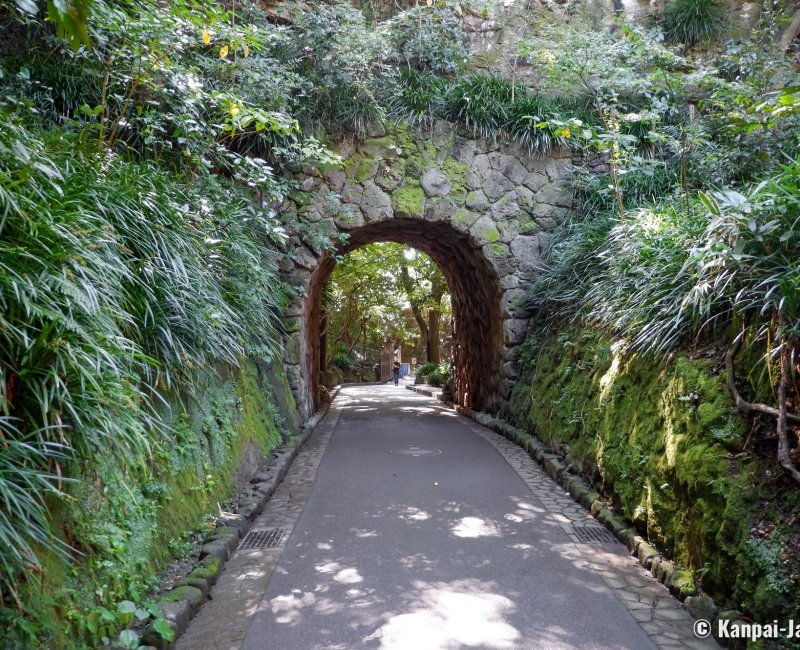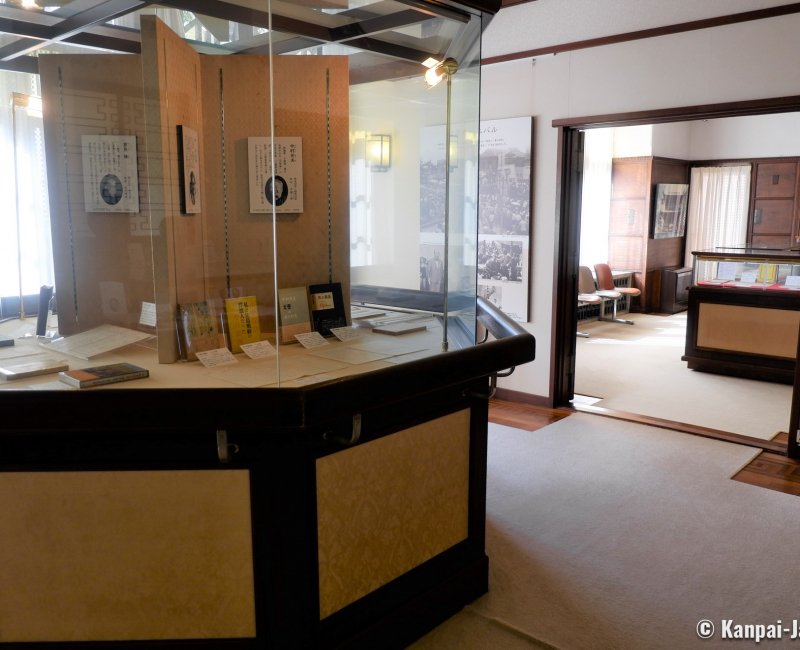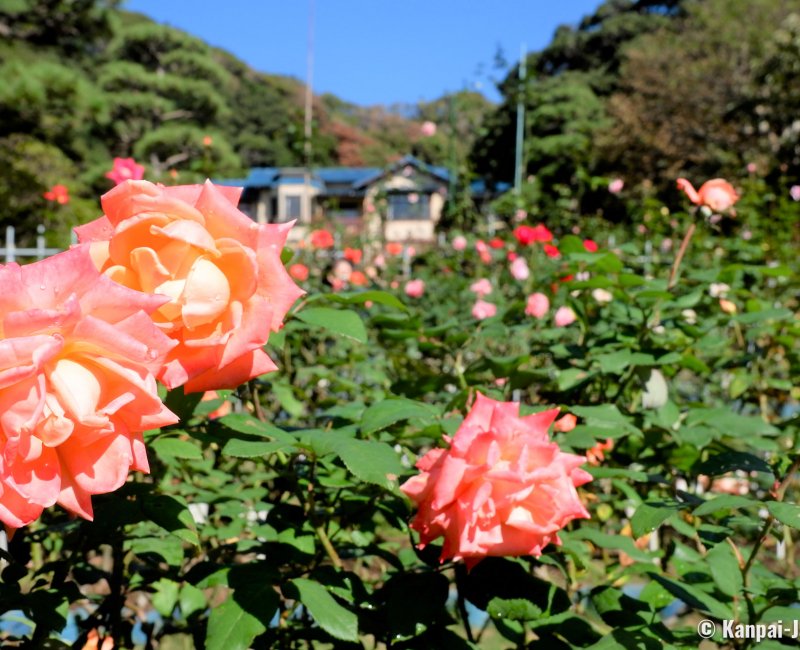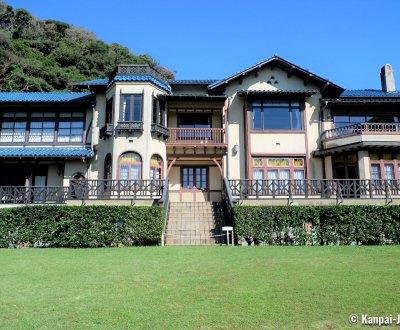Kamakura Museum of Literature
The Former Villa of the Maeda Clan
Kamakura Museum of Literature is located in the south-west of Kamakura’s downtown, near Kotoku-in temple. Its exhibition is dedicated to Japanese literary artworks and hosted in a sumptuous authentic residence of Western-style inspiration. Visitors also enjoy its green setting and a pleasant rose garden blooming in spring and in autumn.
Kamakura Museum of Literature is closed since from March 27, 2023 to 2027 for large scale renovation works
Kamakura Museum of Literature is a rather confidential place, and its main interest is the very site where it was opened in 1985. The museum is indeed housing in an ancient luxury private property that initially belonged to the Maeda Clan (of the former Kaga domain).
The initial building was destroyed by a fire 🔥 in 1910 and was replaced by a more modern residence, with an architectural style inspired by the times’ opening to the West. The last important renovation of the villa occurred in 1936 and was commissioned by Maeda Toshinari (1885 – 1942). After Worl War II, the residence first hosted a Danish minister, then Prime Minister Eisaku Sato (1901 – 1975) and was subsequently transferred to the city in 1983.

Enchanting entrance beneath the vegetation shade
From the station, walk through a quiet residential neighborhood toward the museum. The road unfolds under high trees protecting from sunbeams and heat in summer, thus making the stroll very pleasant. Away from the touristic crowd of the shopping streets, you can hear the birds’ singing and the squirrels’ squeak as they jump from branch to branch.
After buying your ticket, continue to walk under a charming little stone tunnel named Shokakudo (招鶴洞) in reference to a historical episode where Minamoto no Yoritomo (1147 – 1199), the founder of the Kamakura shogunate, freed a crane 鶴 tsuru.
Lanterns 🏮 were placed on the roadsides and ornamented with poems or quotations of famous intellectuals such as Minamoto no Sanetomo (1192 - 1219), Matsuo Basho (1644 - 1694) or Masaoka Shiki (1867 - 1902).

Authors inspired by the Shonan seaside
A rare fact for a museum, you must take off your shoes to visit the exhibition, which is laid out over the 2 levels of the house. The permanent collection is quite extensive and mainly focuses on the works of writers and poets who have stayed in Kamakura from the Meiji era (1868 - 1912) to the present days. From 1889 indeed, the little seaside town became quite popular in Tokyo’s artistic circles, especially due to the easy access allowed by the opening of the Yokosuka train 🚅 line.
Among the most ancient writers displayed at the museum are:
- Soseki Natsume (1867 - 1916);
- Kyoshi Takahama (1874 - 1959);
- Takeo Arishima (1878 - 1923);
- Akiko Yosano (1878 - 1942);
- Ton Satomi (1888 - 1983); and,
- Masao Kume (1891 - 1952).
The interior design is also remarkable for it stayed in its original condition and contrasts with the classical Japanese residence by its subtle mix of the Japanese and European codes.

Last but not least: the museum is enclosed in a well-maintained sloping park offering a view on the Sagami Bay. The mellow green of the lawns is harmonized with the vivid colors of the rose 🌹 garden, growing in the lowest part and that blooms twice a year: in spring 🌸, then in autumn 🍁. Amateur photographs can make beautiful pictures of the roses in the foreground and the interesting facade of the villa in the background.

